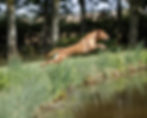top of page


SERVICES
For information on ANY of our services, please see the 'Bookings' page or email us: info@swiftdogtraining.com

-
Residential (in house) training
-
Boarding
-
Day Care
-
Stud dogs
-
Whelping services
-
Grooming
-
Consultation calls
-
Taster sessions
-
Behavioural referral
-
Gundog training from basic - International level (including retriever competition)
-
Puppy training
-
Obedience from basic - advanced level (not competitive)
-
Socialisation (all levels and issues of dogs accepted)
-
Agility - Basic and fun level only
bottom of page


